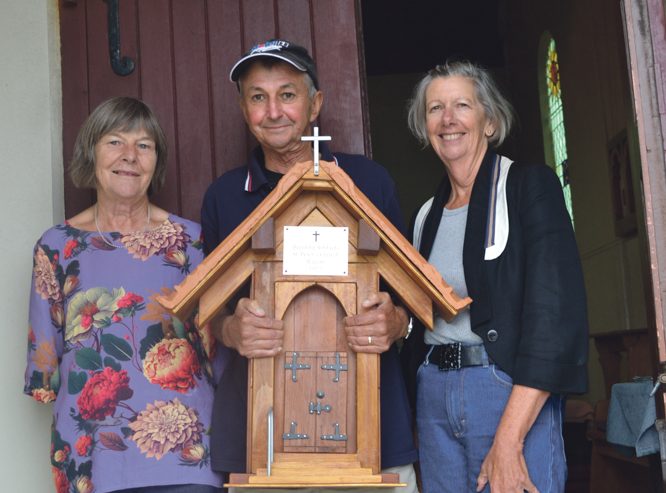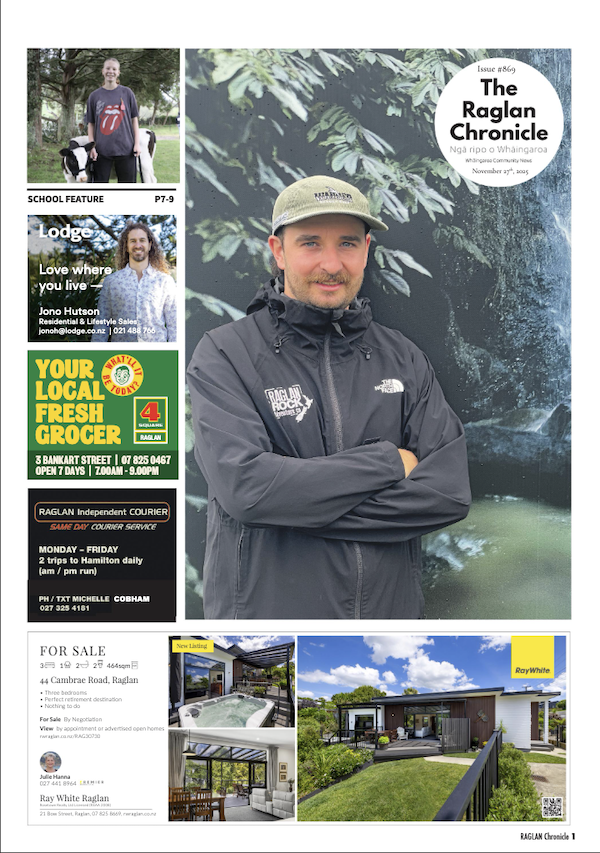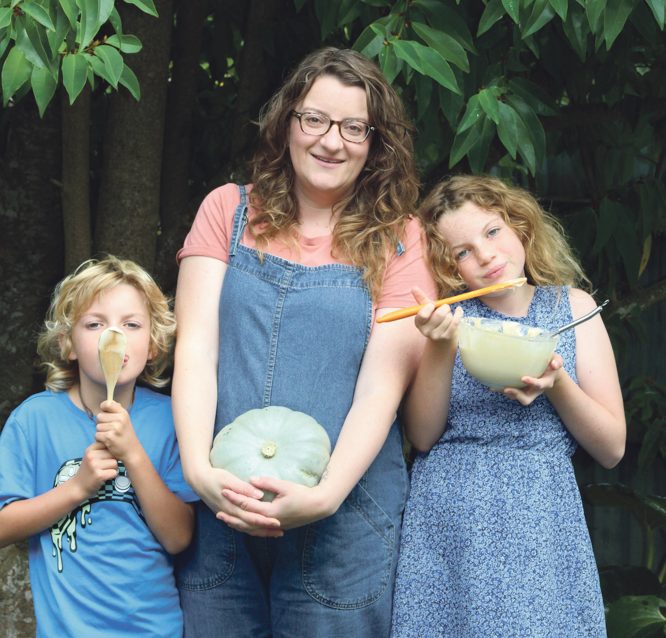Don’t expect the town to be as “gay with bunting” as when St Peter’s Anglican Church first opened its doors, but the church’s centennial celebrations next week will be a stylish affair all the same.
Parishioners will turn out in 1920s regalia to a special dinner to celebrate 100 years of worship at the small stucco chapel – complete with stained glass windows and belfry – which sits high on the corner of Bow and James Sts.
Renowned local chef and parishioner Colin Chung, who opened ‘Vinnies’ cafe back in the 90s, will cater for the function, to be held in the adjacent church hall.
As part of the celebrations a book by local historian Elizabeth Amoore will also be launched. It details among other things the blessing of the church’s foundation stone in 1925 which was, according to old newspaper articles, quite an event in the town’s history.
It was one of these articles which described Raglan as being gay with bunting, an amused Elizabeth told the Chronicle. While the quaint turn of phrase might raise a chuckle these days, her new book reveals the blessing was nevertheless a big deal for the town, with the Frankton choir leading the procession to the church and parishioners turning out in force.
In fact “it looked like the whole town was there”, added centennial coordinator Sue Kendall, who is tasked with pulling together a weekend of celebrations which will culminate with a Sunday service led by Bishop Philip Richardson of the Waikato-Taranaki diocese.
Old records also reveal a time capsule was buried beneath the foundation stone a century ago, but exactly where remains a mystery. Digging began in earnest late last year to unearth this historic cache but to no avail, says Sue. Not a trace of the time capsule has been found.
But the setback prompted church stalwart Peter Williams – known for his various inventive solutions over the years at Raglan Engineering – to contemplate how best to preserve mementos from this century, so they at least can be unearthed 100 years from now.
What he’s come up with is his own version of a time capsule made simply from a piece of stormwater pipe sealed at both ends, with a waterproof bag inside to store such things as the centennial book, a current issue of the Chronicle and other memorabilia.
It will be buried beneath the recently re-engraved foundation stone and the deed duly noted in current church records so as not to get lost.
Peter has also, in an impressive labour of love, created a complete model of St Peter’s that will be unveiled during the centennial weekend. It’s made from “relics” he’s collected from the site over the years – most recently when the church underwent earthquake-strengthening work back in 2020.
The miniature chapel has been fashioned of totara which came from the church’s old piles, topped with a piece of clay tile roofing Peter salvaged from the church’s re-roof in the 70s. Curiously the clay tile is inscribed with something in French, Peter reveals.
The miniature’s double entrance doors are made of pohutukawa as a nod to how he himself remembers the church from bygone days – lined on one side with a row of pohutukawa trees.
Meanwhile, as a lasting tribute to St Peter’s congregations and to celebrate 100 years of worship, plans are afoot for a stained glass window to be installed at the end of this year on the church’s west wall which currently features only clear glass.
The St Peter’s vestry, or church members, envisage a window design that acknowledges the story of Te Awaitaia, a rangatira of great significance in the Raglan area. His conversion to Christianity and leadership were instrumental in fostering peace and unity in the district following a period of intertribal conflict.











